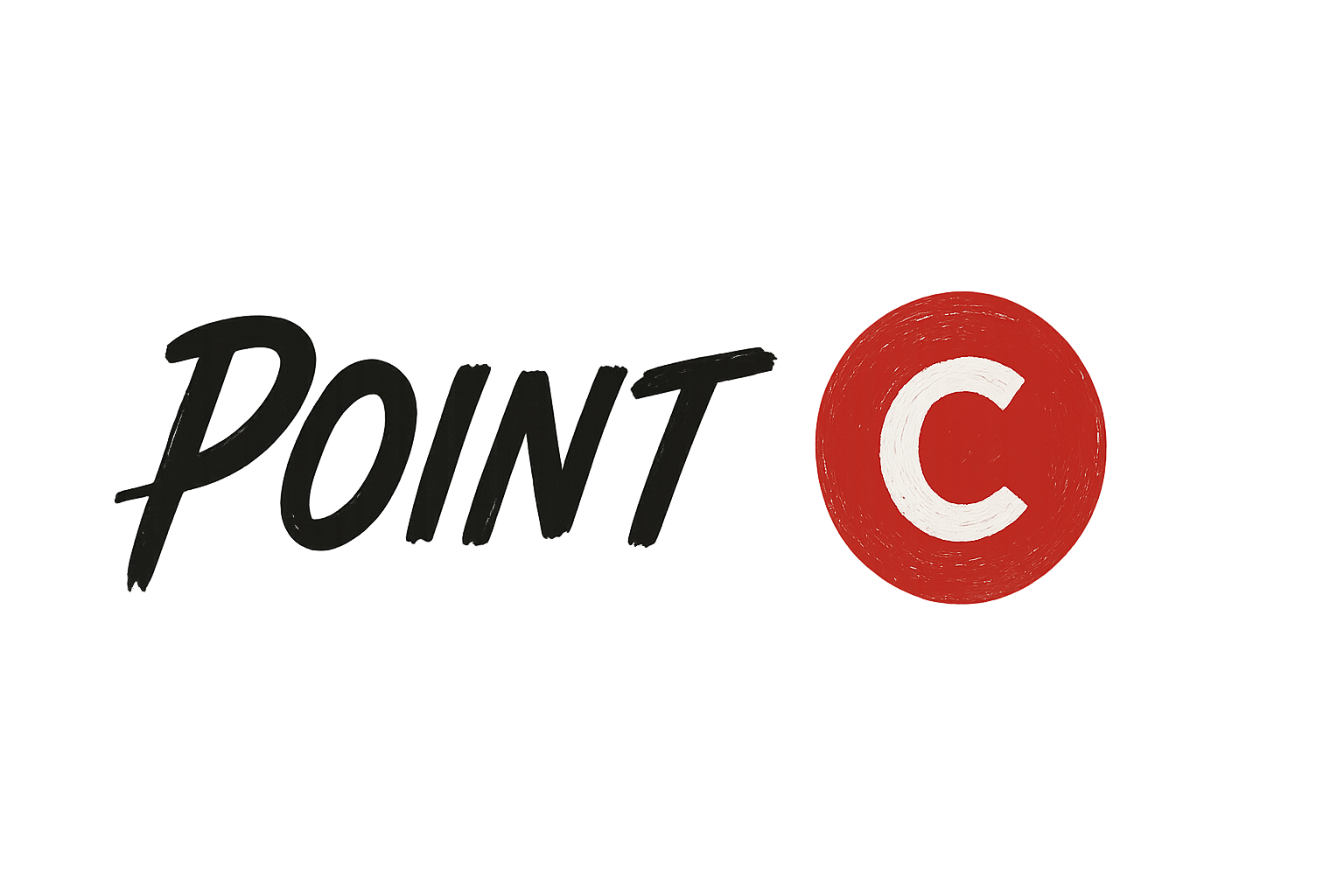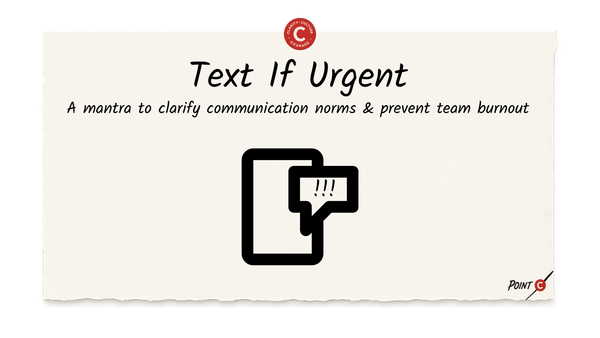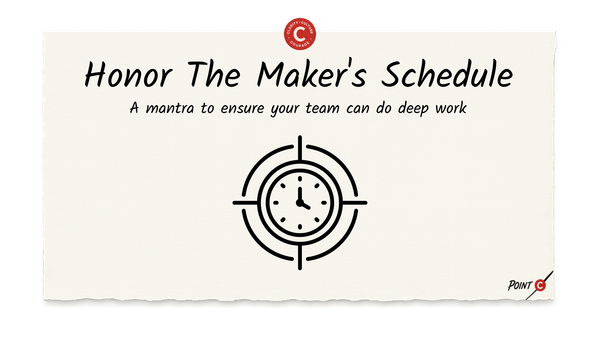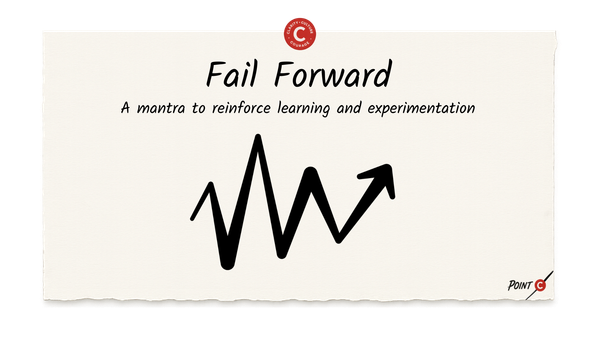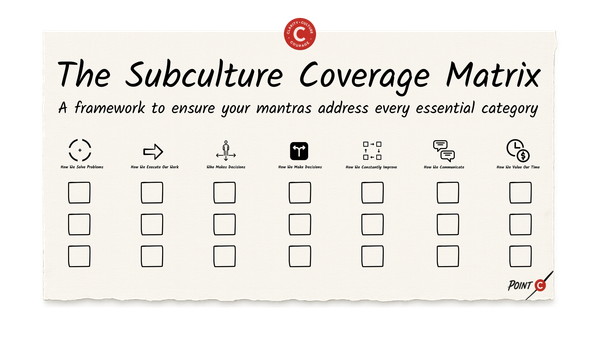The Learning Zone Matrix
A framework to assess your culture’s capacity for innovation
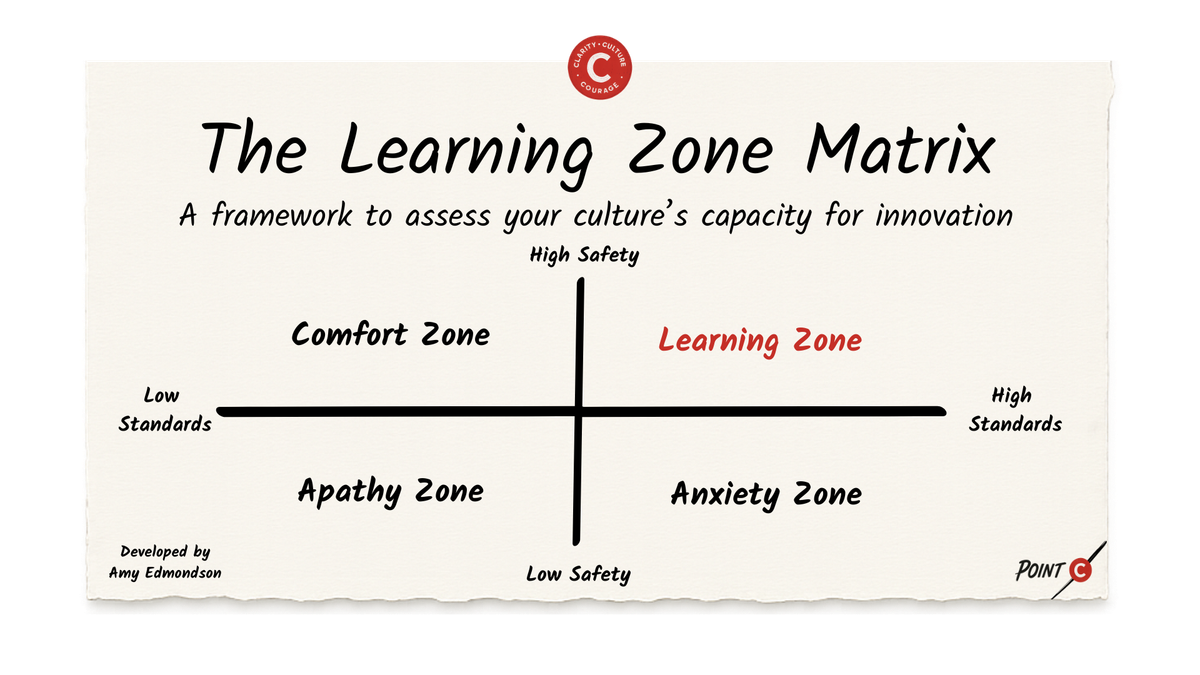
Last week, I wrapped up an 11-week series focused on strategy and storytelling that culminated in the launch of my first mini-book: The Venture Story. Thank you for the overwhelmingly positive response to the digital prototype. I just got my hands on a physical prototype and can't wait to make it available to you.
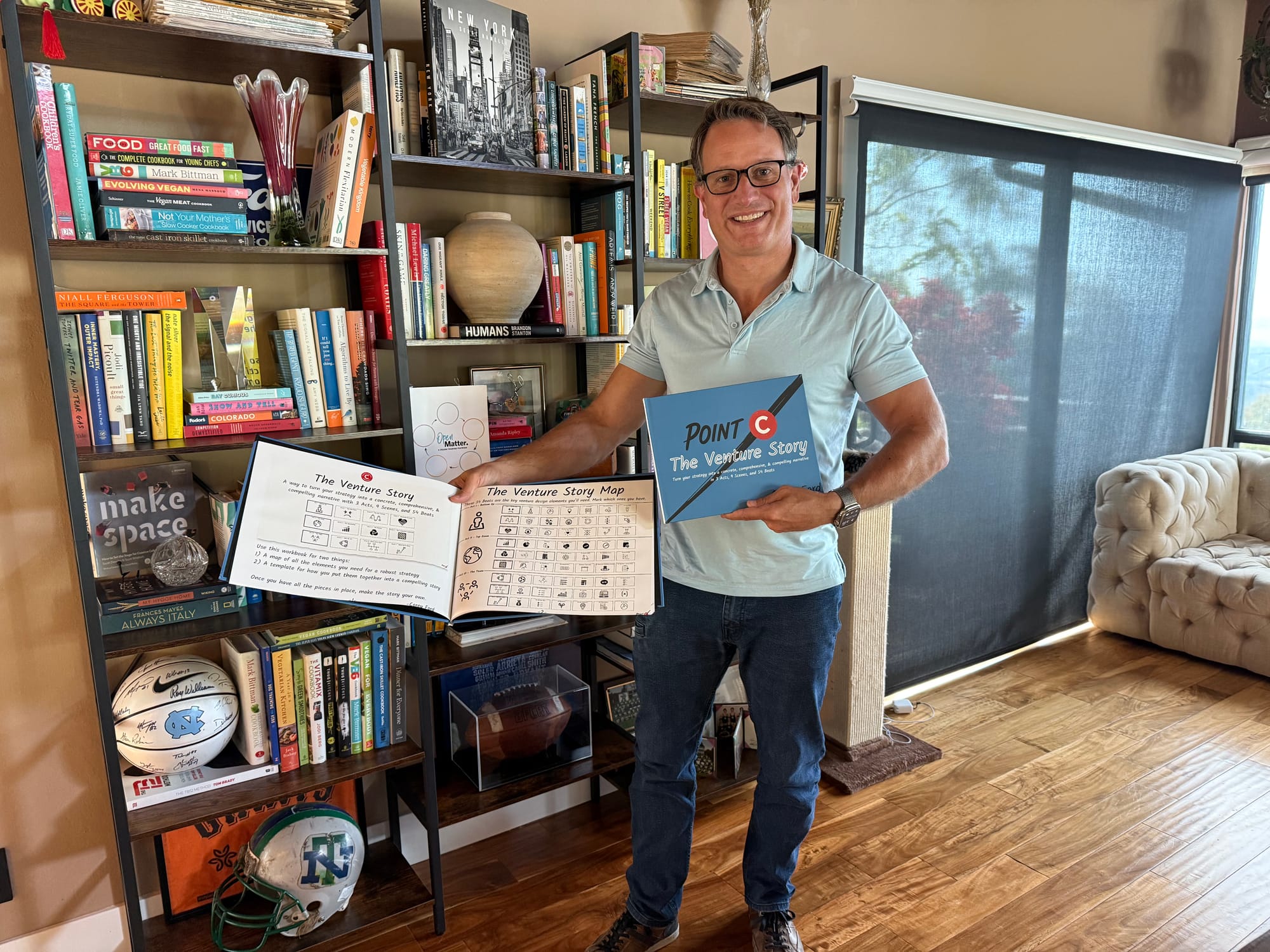
This week, I'm excited to shift gears to start writing about what I am even more passionate about: empowering leaders to build subcultures of innovation.
Developing the right strategy is critical, but if you don't have the right culture to back it up, the strategy is worthless. In times of such rapid change, I believe your job as a leader is not to come up with the next big thing, because once you do, the world will continue to change under your feet. Your job as a leader is to build the people, processes, and culture that enables your organization to continuously understand the changing needs and behaviors of your target customers, consistently prototype and iterate on your offerings to fit those changing needs while leveraging emerging technologies, and to constantly adjust your business models and strategies in order to remain defensible and sustainable.
In short, your job as a leader is to build a subculture of innovation.
Through The Idea Bucket, I will regularly give you specific frameworks, mantras, and techniques that you can deploy to intentionally build that subculture of innovation.
But let's start with the end in mind. What does a subculture of innovation look and feel like? That's where today's framework comes in.
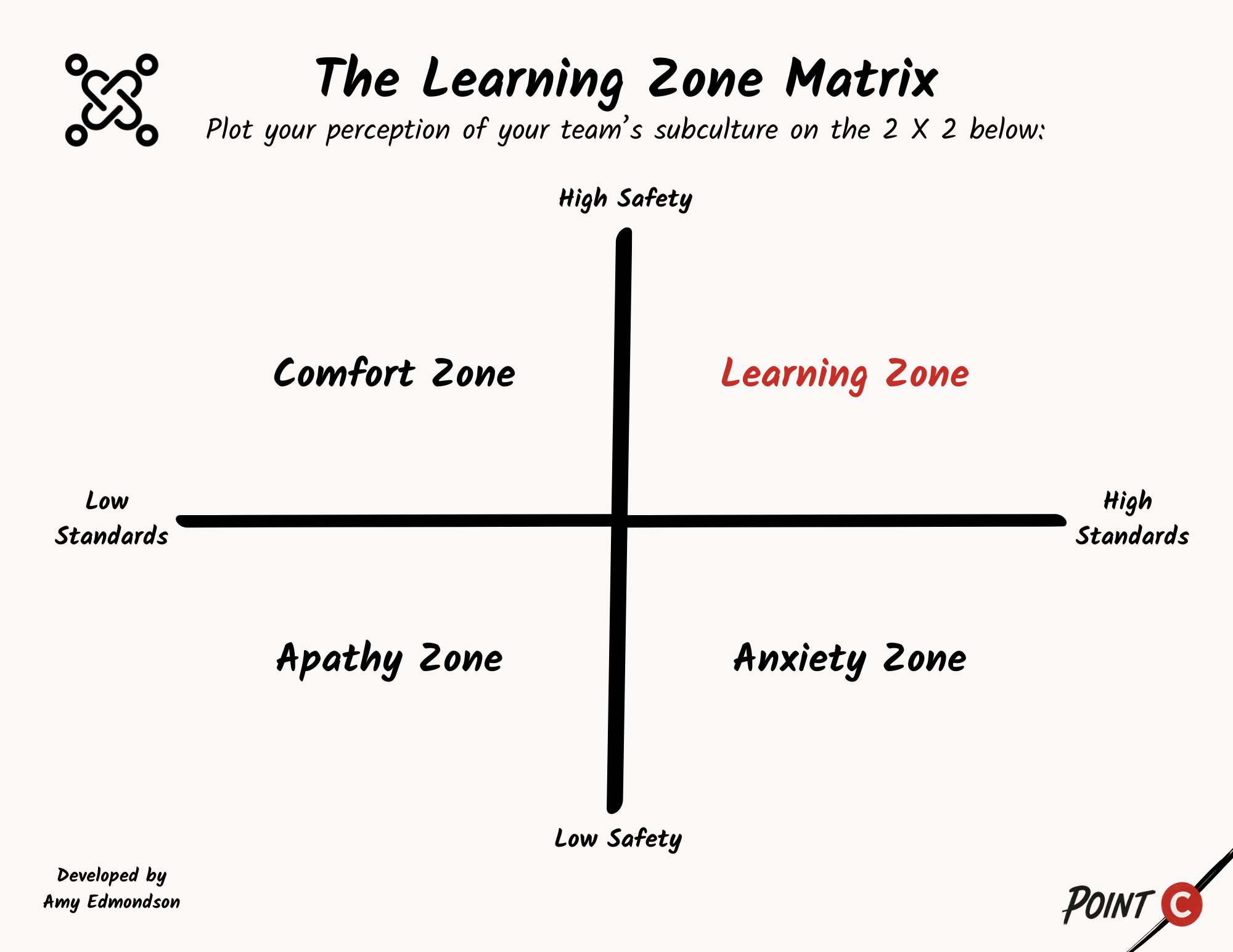
Introducing: The Learning Zone Matrix
Developed by HBS Professor Amy Edmondson, The Learning Zone Matrix is a framework that you can use to assess your subculture's capacity for innovation. It's a simple yet powerful 2X2 matrix that maps your subculture on the two most important innovation variables:
1) High Standards: What do your standards look like in your subculture? Are they high and explicit or are they low and abstract? Your goal is to establish clear, high standards and strive for continuous improvement and excellence, not just on the results but also on the process of getting there.
2) High Psychological Safety: What does psychological safety look like in your subculture? Is there a high sense of safety or a low sense of safety? Your goal is to create a high level of psychological safety to enable your team to experiment and take risks.
If you have achieved both of these, you've hit the innovation sweet spot: The Learning Zone. This is a subculture where people push for excellence and feel safe enough to take risks. According to Edmundson, in this zone "people collaborate and learn in the service of high performance, getting complex and innovative work done." This is our goal as innovation leaders.
Unfortunately, most organizational subcultures fall short of this goal.
A common pitfall for high-achieving leaders is to drive their subculture into The Anxiety Zone. This is a culture where the standards are very high but the psychological safety is very low. Leaders push their teams to achieve but success is defined by perfectionism rather than by rapid learning and growth. Failure is avoided at all costs. People hold back their ideas or tear down the ideas of others. Edmundson writes that in this zone "people are reluctant to offer ideas, try new things, or ask for help, putting the work at risk." Fear of failure is in the air.
An opposite pitfall awaits leaders who seek harmony at all costs. They allow their subculture to drift into The Comfort Zone. This is a culture where it is very psychologically safe and comfortable but at the cost of not upholding high standards. Edmundson describes this culture as "people are open and collegial but not challenged. On teams, they fail to make major strides." The fear in the air here isn't fear of failure, it is fear of conflict. Anything goes as long as there is harmony and consensus.
Finally, there is The Apathy Zone. Leaders in this culture — if you can call it leadership — instill a culture of low standards mixed with low psychological safety. Edmundson says this results in "people show[ing] up at work with their hearts and minds elsewhere; choosing self protection over exertion." This is the opposite of innovation.
Our goal is to build a subculture in The Learning Zone. You don't have to make false trade-offs to have both high standards and high psychological safety, you just have to be intentional about both. That's what I'm here to help you do.
The Power of The Learning Zone Matrix
The Learning Zone Matrix isn’t just a diagnostic tool — it’s a mindset shift.
Too many leaders operate from a false tradeoff:
“If I want high standards, I have to be tough.”
“If I want psychological safety, I have to lower the bar.”
But that’s not a tradeoff. It’s a trap.
High standards and high psychological safety are not opposite ends of a spectrum — they’re independent axes. That’s the brilliance of the matrix. It makes the possibility space visible. It gives you a new goal to aim for: The Learning Zone.
That small shift — from a line to a grid — changes everything. Instead of feeling stuck between brutal excellence and soft mediocrity, leaders can design toward a culture where excellence is expected and experimentation is safe.
A lot of high-achieving leaders stay stuck in The Anxiety Zone because they think that’s the price of greatness. It’s not. It’s the price of fear. And leaders who default to comfort often do so to preserve harmony — not realizing they’re capping their team’s potential in the process.
The Learning Zone says: you don’t have to choose. You can create a culture where people are stretched and supported. Where standards are high and everyone is safe enough to fail forward.
That’s the kind of culture that unlocks innovation. That’s the mindset shift you need to make as a leader.
How To Use The Learning Zone Matrix
I use the Learning Zone Matrix in three ways — as a compass, a diagnostic, and a design tool:
1) A leadership compass
The matrix gives me a clear target. It shows me what “good” looks like — and keeps me from falling into the false tradeoff between high standards and psychological safety. When I feel myself leaning too hard in one direction, the matrix reminds me: my job is to lead toward both.
2) A diagnostic tool
It helps my clients and their teams assess where their culture stands — and what needs to shift.
Here’s how I walk clients through it:
- Establish the goal: Name the Learning Zone as the culture you want to build.
- Gather individual input: Ask each team member to plot where they think the culture currently lives.
- Create space to share: Hold a discussion where everyone shares their placement and reasoning.
- Spot the gaps: Identify where perceptions differ and what behaviors are driving them.
- Make it a shared goal: Collaboratively brainstorm concrete actions to move “up and to the right.”
This exercise doesn’t just diagnose culture — it creates it. Because once your team sees the map, they can start moving together.
3) A design tool
The matrix helps me plot my leadership tools across both axes. For example:
- The Rubric sets high, shared standards for excellence.
- The Design Review creates a psychologically safe ritual for sharing unfinished work.
Individually, they’re useful. Together, they reinforce a culture that expects greatness and encourages risk-taking — the essence of the Learning Zone.
Your Challenge This Week
Download The Learning Zone Matrix Worksheet and use it to assess your subculture:
- Share this post with your team or introduce the framework in your next meeting.
- Hand out the matrix and ask each team member to plot where they think the culture is.
- Go around the room and hear everyone out. Don’t debate or defend — just listen.
- Thank your team for their honesty. Tell them you’ll reflect and return with thoughts.
- At your next meeting, share what you heard and how you plan to respond.
Set the tone: feedback is a gift, not a demand. What matters most is that your team sees you engaging and listening, not trying to solve every issue that arises in real-time.
Next Week
We've established our overall goal for building a subculture of innovation: high standards + high psychological safety. In future posts, I will give you specific tools to move your team towards that quadrant as I help you develop your own leadership playbook.
But before we dive into the how, we need clarity on the where. What exactly is a subculture? And where do you have the power to shape it?
Next week, we'll explore a simple framework to help you define the contexts in which you are empowered to build and expand your influence: The Subculture Expansion Zone
About This Newsletter
The Idea Bucket is a weekly newsletter and archive featuring one visual framework, supporting one act of leadership, that brings you one step closer to building a culture of innovation.
It’s written by Corey Ford — executive coach, strategic advisor, and founder of Point C, where he helps founders, CEOs, and executives clarify their visions, lead cultures of innovation, and navigate their next leadership chapters.
Want to explore how strategy and storytelling come together? Check out The Venture Story — my first mini-book and leadership storytelling framework.
Want to give your teams an immersive learning experience on these concepts? Bring me in to run The Point C Training Camp at our company.
Want 1:1 executive coaching on this framework or others? Book your first coaching session. It's on me.
